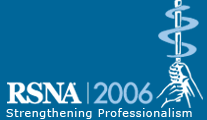
Abstract Archives of the RSNA, 2006
Vicky Joo-Lin Goh MBBCh, Presenter: Research Consultant, PDL BioPharma, Inc, Fremont, CA
Steve Halligan MD, Abstract Co-Author: Research Consultant, Medicsight, Inc, London, UK
Frances Daley, Abstract Co-Author: Nothing to Disclose
Thomas Guenther, Abstract Co-Author: Nothing to Disclose
Clive I. Bartram MD, Abstract Co-Author: Nothing to Disclose
In vivo functional evaluation of tumor perfusion has been advocated for assessing the effects of anti-vascular drugs, but whether such perfusion measurements reflect angiogenesis or established vasculature remains unproven in colorectal cancer.
23 prospective patients (12 male; 11 female; mean age 68 years) with colorectal adenocarcinoma, underwent a 65 second perfusion study. Mean tumor blood volume, flow, transit time and permeability were determined for a 2cm tumor volume using commercial software (Perfusion 3, GE Healthcare). Tumor sections from the surgical specimen corresponding to the functional CT sections were examined following immunohistological staining for CD34, vascular endothelial growth factor (VEGF), thymidine phosphorylase (TP), and glucose transporter (Glut-1). In addition to microvessel density analysis, semi-quantitative scoring of VEGF, TP and Glut-1 expression was performed. Statistical advice was sought; Pearson correlation coefficient was used to assess the relationship between the measured parameters.
There were 2 Dukes’ A, 12 Dukes’ B, and 9 Dukes’ C tumors; 4 with metastases. Mean (standard deviation, SD) of blood volume, blood flow, mean transit time and permeability was 6.2 (1.4) ml/100g tissue, 72.1 (28.4) ml/100g tissue/min, 9.3 (3.9) seconds, and 13.9 (3.2) ml/100g tissue/min respectively. Mean (SD) of angiogenic density was 51.8 (10.7). Tumor blood volume, and permeability correlated positively with angiogenic density (r 0.51, p 0.01; r 0.41, p 0.05 respectively). No significant correlation with VEGF, TP or Glut-1 was identified (p>0.05 respectively). There was a non-significant trend for blood volume, flow, and permeability measurements to increase, for transit time to decrease, and for VEGF expression to decrease with histological stage.
Colorectal cancer perfusion measurements likely reflect angiogenesis.
Explores the histological basis of CT perfusion measurements in human colorectal cancer; measurements reflect angiogenesis and are relevant for anti-vascular drug assessment
Goh, V,
Halligan, S,
Daley, F,
Guenther, T,
Bartram, C,
Do Colorectal Cancer Perfusion Measurements at Perfusion CT Reflect Angiogenesis or Established Vasculature?. Radiological Society of North America 2006 Scientific Assembly and Annual Meeting, November 26 - December 1, 2006 ,Chicago IL.
http://archive.rsna.org/2006/4432852.html

